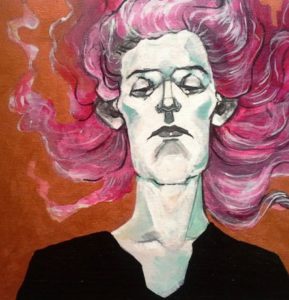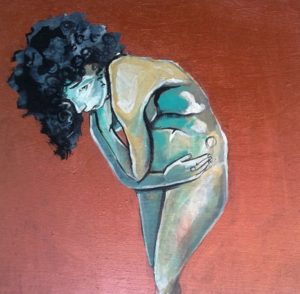CoHo Curator’s Note
I was first struck by the stark beauty of the figures in Amanda’s work. Each character has an energy that seems palpable.
The people she paints are both strong and fragile, made more impressive and fierce by their vulnerability, their humanity, their bodies.
Her expressive and emotive line work and the universal and archetypal characters she creates pull us into a conversation about what it means to be a man or a woman, or possibly both or neither.
It is a conversation about what it means to be in a body.
In Sarah Treem’s The How and The Why, we are also introduced to fierce women, powerful in all their vulnerability, creating their own narratives about what it means to be in their bodies.
Unstudied and unexamined by male scientists for generations, the characters in this revolutionary script dive into the how and the why of menstruation and menopause, of fertility, sperm, blood and evolution, bravely searching for the truth of what the female anatomy does and why it does it.
 Through both Amanda’s enthralling visual representations and the fight for scientific acceptance of radical theories in The How and The Why, we are asked to consider who gets to decide what about whose body, and whose determination of what our bodies mean or say about us is considered true.
Through both Amanda’s enthralling visual representations and the fight for scientific acceptance of radical theories in The How and The Why, we are asked to consider who gets to decide what about whose body, and whose determination of what our bodies mean or say about us is considered true.
Both artistic works are a journey into personal empowerment, what femininity may be or not be, its limits and unlimited potential, where gender may begin, end, fail us or serve us.
From the discourse surrounding women’s bodies in the current political campaign to the ongoing fight for LGBTQ+ rights, to the struggle for self-acceptance and body positivity that we all may experience regardless of sex or gender, there has perhaps never been a more relevant or pressing time in our national history to consider the question of what our bodies mean to us and to society, How and Why they are defined, and who gets to author that definition.




